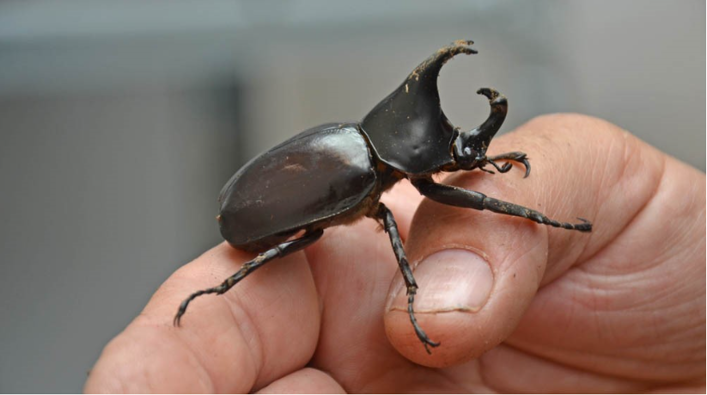Spent a week in one of my favourite regions: Tairawhiti… Wainui, Tolaga Bay, Mangatuna and Tokomaru Bay.
The school kids love muckin’ around on beaches, despite all that hideous slash everywhere.
Looking for bugs, of course.
At Tolaga Bay they found heaps of rather large black scarab beetles, known in the trade as Pericoptus truncatus, or “sand scarab”; moving across the sandy, grassy play area during the day.
Captured specimens were digging down into the sand provided in the containers.
This was my opportunity to raise the fact that this beetle is related to some rather famous species from the more tropical regions of the world: The “Rhinoceros beetles”.
The male sand scarabs actually have a rudimentary “horn” on their head to shows the species “affinities”.
Our sand scarabs live on beaches and dunes and are adapted to moving about the sand habitat. The larvae (grubs) are able to actually migrate from the beaches to inland habitats over reasonably long distances; it is presumed they are needing a certain amount or percentage of moisture in the sand.
The grubs are “massive” (6 cm long or more), creamy-white, with distinct round stomata (breathing-hole) patches on the side of their bodies.
Their larval food is the decaying woody mass of driftwood on beaches and the roots of grasses in dune vegetation.
The adult beetles are sturdy insects that can dig into the sand really fast. During the day they will hide in the sand (sometimes at considerable depth: a meter or so deep!), but at night they surface again to go hooning in the dunes and on the beach – they are very noisy flyers and that no doubt helps with locating potential partners.
The front legs of these beetles have specially-adapted claws that allow them to dig efficiently.
The beetles and the larvae themselves are often coated with populations of mites on their skin. These have always thought to be parasitic mites, but there are suggestions that these tiny critters might actually be feeding on other mites and nematodes, associated with the sand scarabs.
LISTEN ABOVE
Take your Radio, Podcasts and Music with you










